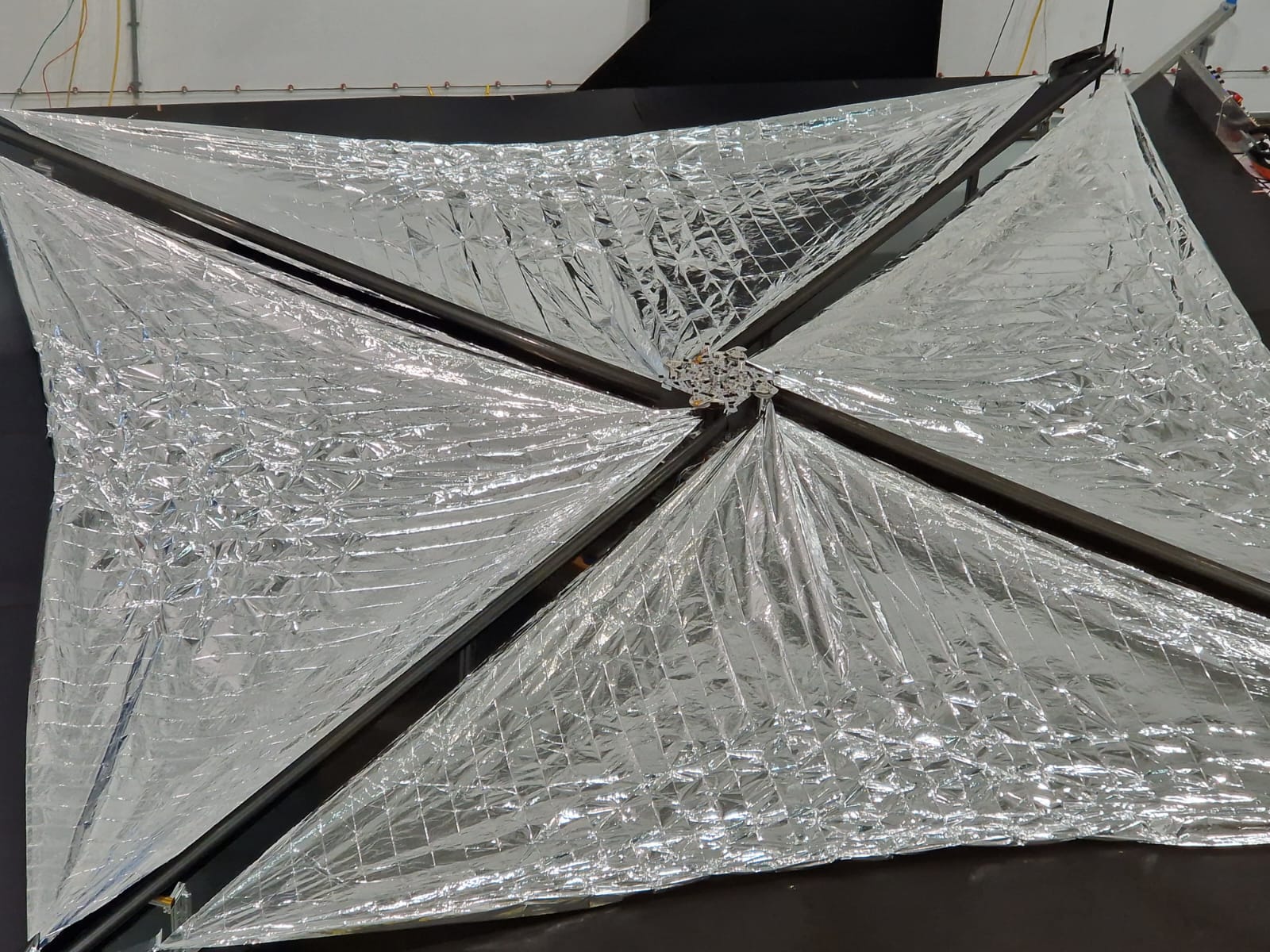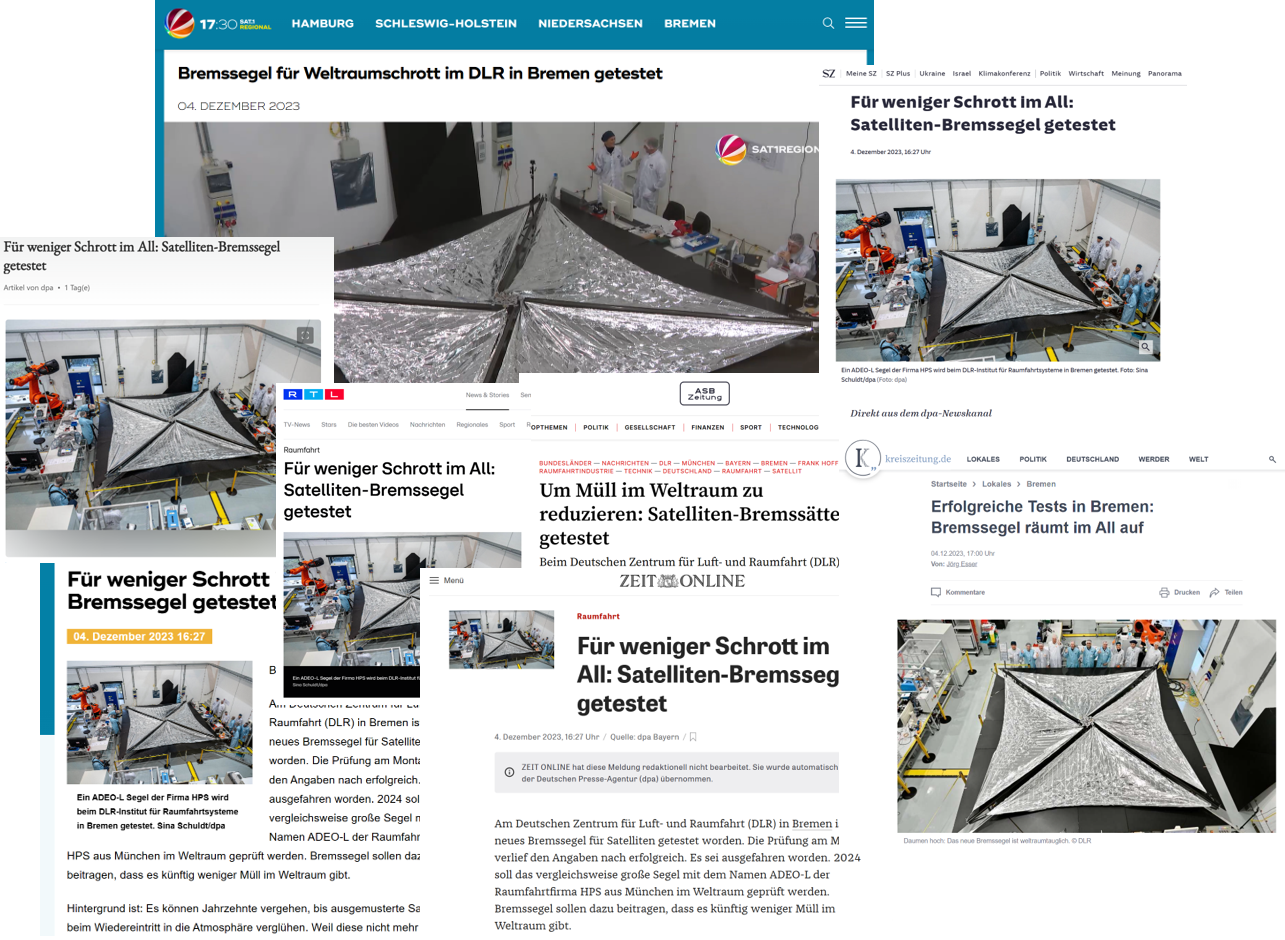November 2024
HPS and EXOLAUNCH: Making Space Clean Again
HPS is happy to join forces with the Germany-based Exolaunch and is fully engaged to support customers of Exolaunch by enabling this very special and successful NewSpace-launch service provider to grant priority access to the delivery schedule of flight-proven ADEO* deorbit sails which are currently in high demand.
EXOLAUNCH’s COO Jeanne Allarie and HPS’s CEO Ernst Pfeiffer signed an Agreement on Space Tech Expo 2024 in Bremen in a great joint spirit (see pictures) the ambitious endeavour of
- being a role model for a sustainable use of space and
- of raising awareness with all potential customers on an existing solution for deorbiting: ADEO-modules are easy, affordable and reliable to contributing significantly to Making Space Clean Again.
See for the respective EXOLAUNCH announcement
(* ADEO-modules are needed to allow a satellite deorbit after its “End-of-Business” within five years; satellites without this or any kind of deorbit accelerator do not get clearance for launch anymore.)
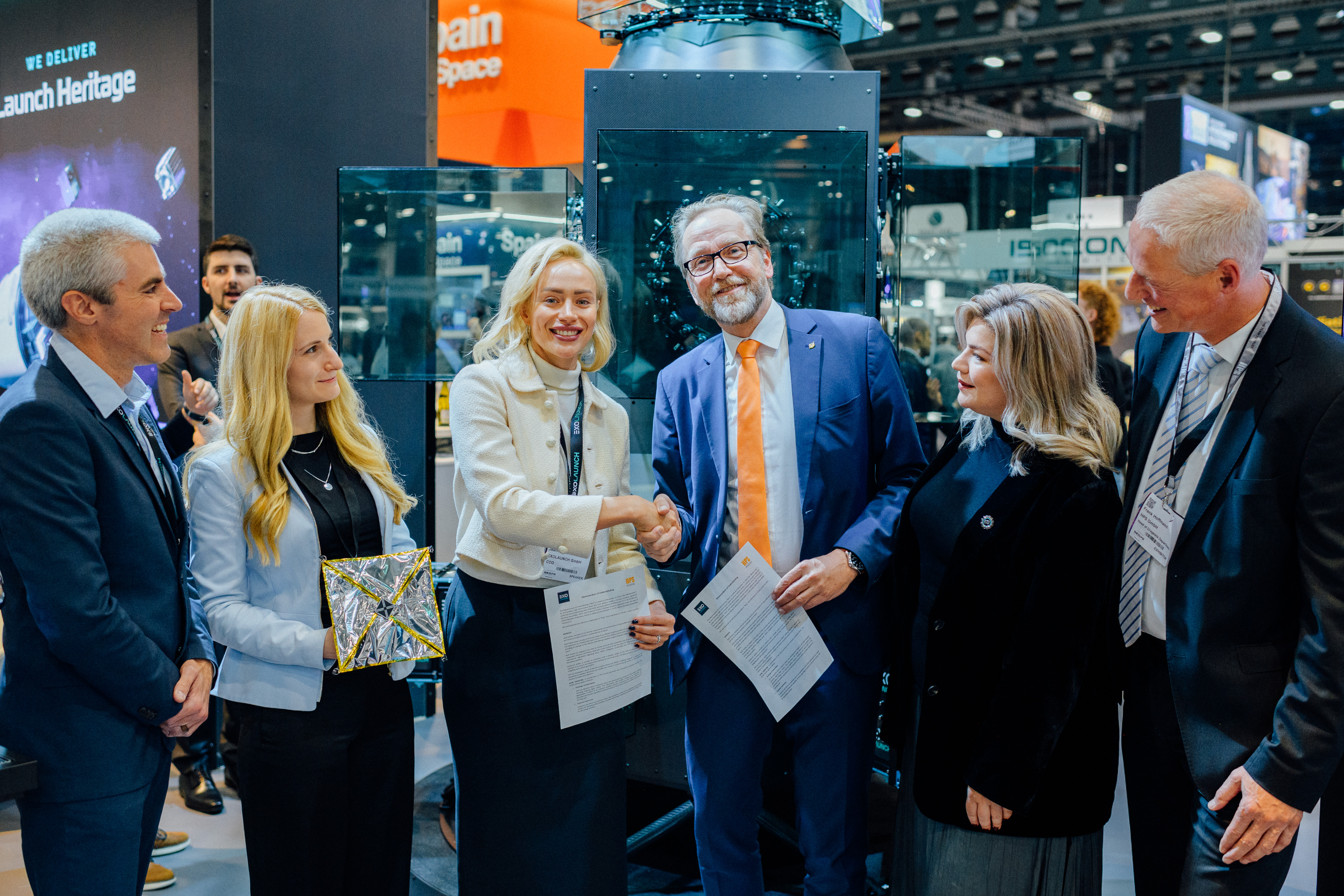

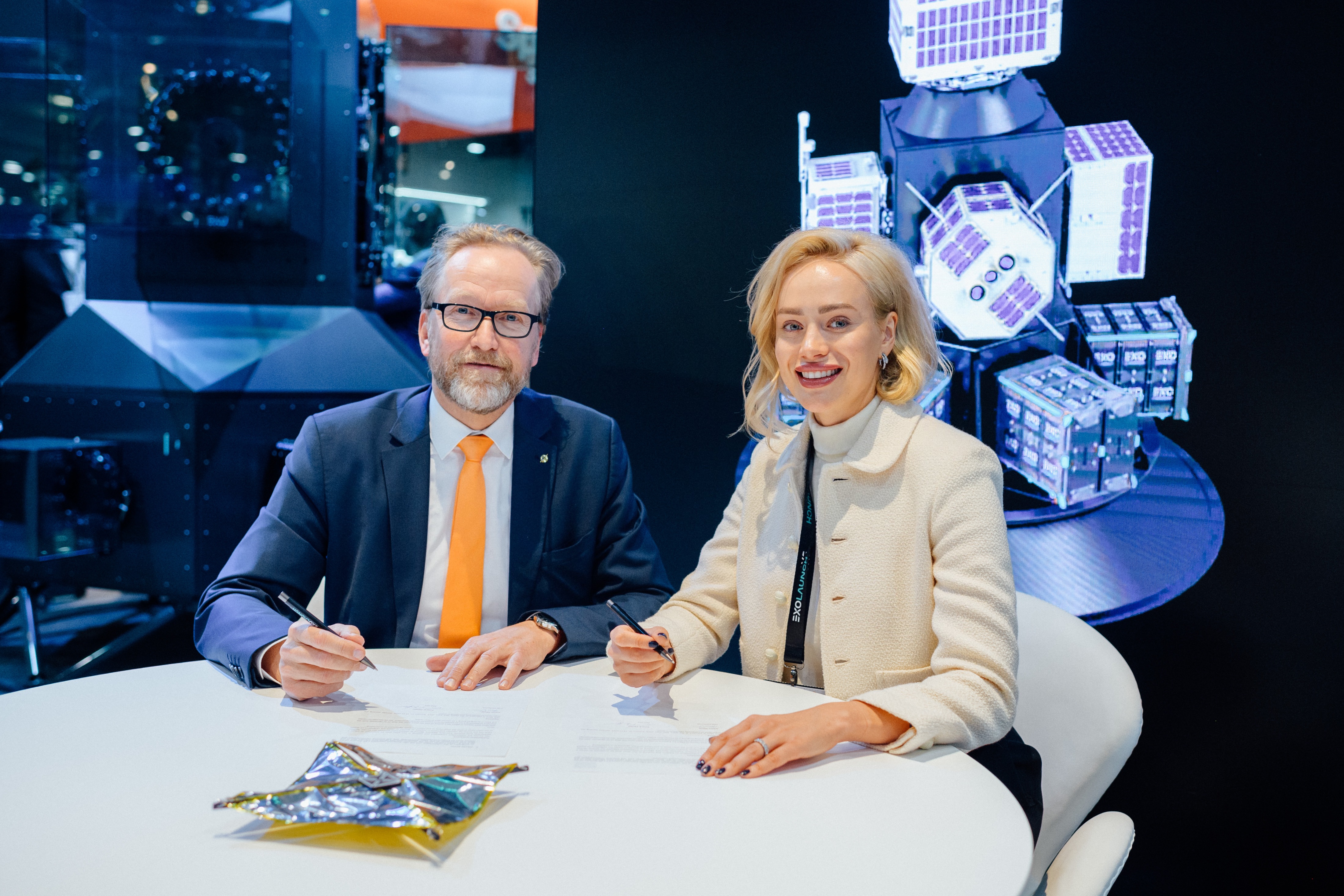
November 2024
German space agency chief Dr. Walther Pelzer and DLR delegation focus on visit to HPS Group
During the traditional DLR delegation round on the opening day of the Space Tech Expo in Bremen, the head of the German Space Agency at DLR, Dr. Walther Pelzer, focused his attention on SMEs in the German space industry. Special attention was paid to the innovation forge HPS. And it was represented in groups: with HPS Germany (Munich), HPS Romania (Bucharest) and the joint venture company HPtex (Münchberg, Germany).
With reference to pioneering antenna projects such as HERA and EUCLID, company boss Ernst K. Pfeiffer emphasized the leading position Germany has gained in special antennas for space missions. HPS is also positioning itself as a leader in the commercial sector with the successful ADEO braking sail project, which ensures compliance with the new 5-year rule for satellite deorbiting and thus keeps the satellites ready for launch.
In his role as spokesman for German space SMEs, Ernst Pfeiffer also took this opportunity to emphasize the enormous importance of the DLR and ESA’s capability-enhancing technology programmes for SMEs as the innovation backbone of the industry. According to Pfeiffer, the precise promotion of the technological capabilities of SMEs via dedicated competition areas reserved for SMEs is irreplaceable.
Live demonstrations, e.g. of a functional model of the ADEO brake sail or a scaled model of a deployable large antenna reflector, supplemented by product demonstrations from HPS-Romania (e.g. radiator) and from HPtex’s MESH production (e.g. Ka-band mesh sample for use in the Copernicus mission CIMR) rounded off the visit program.
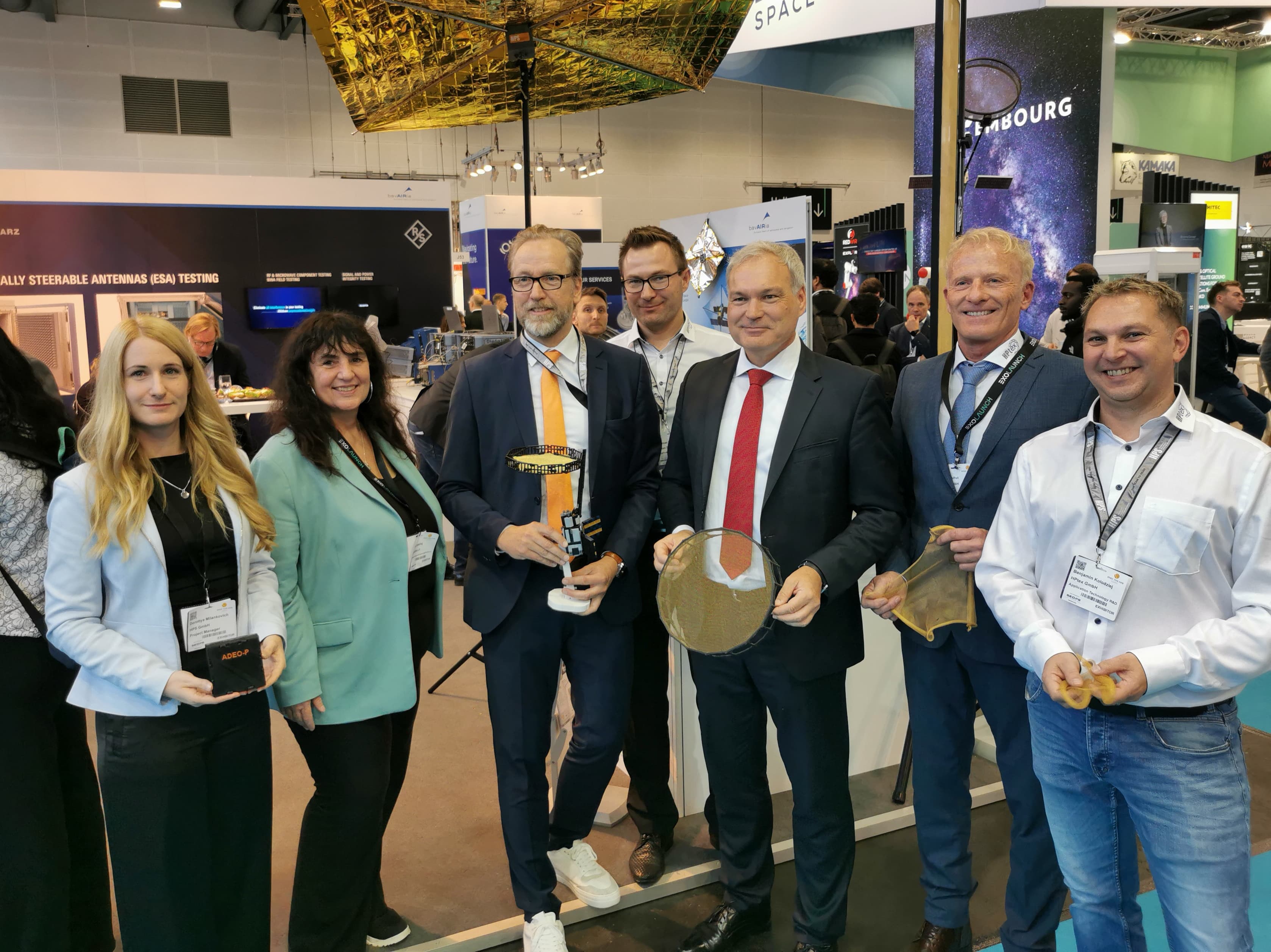
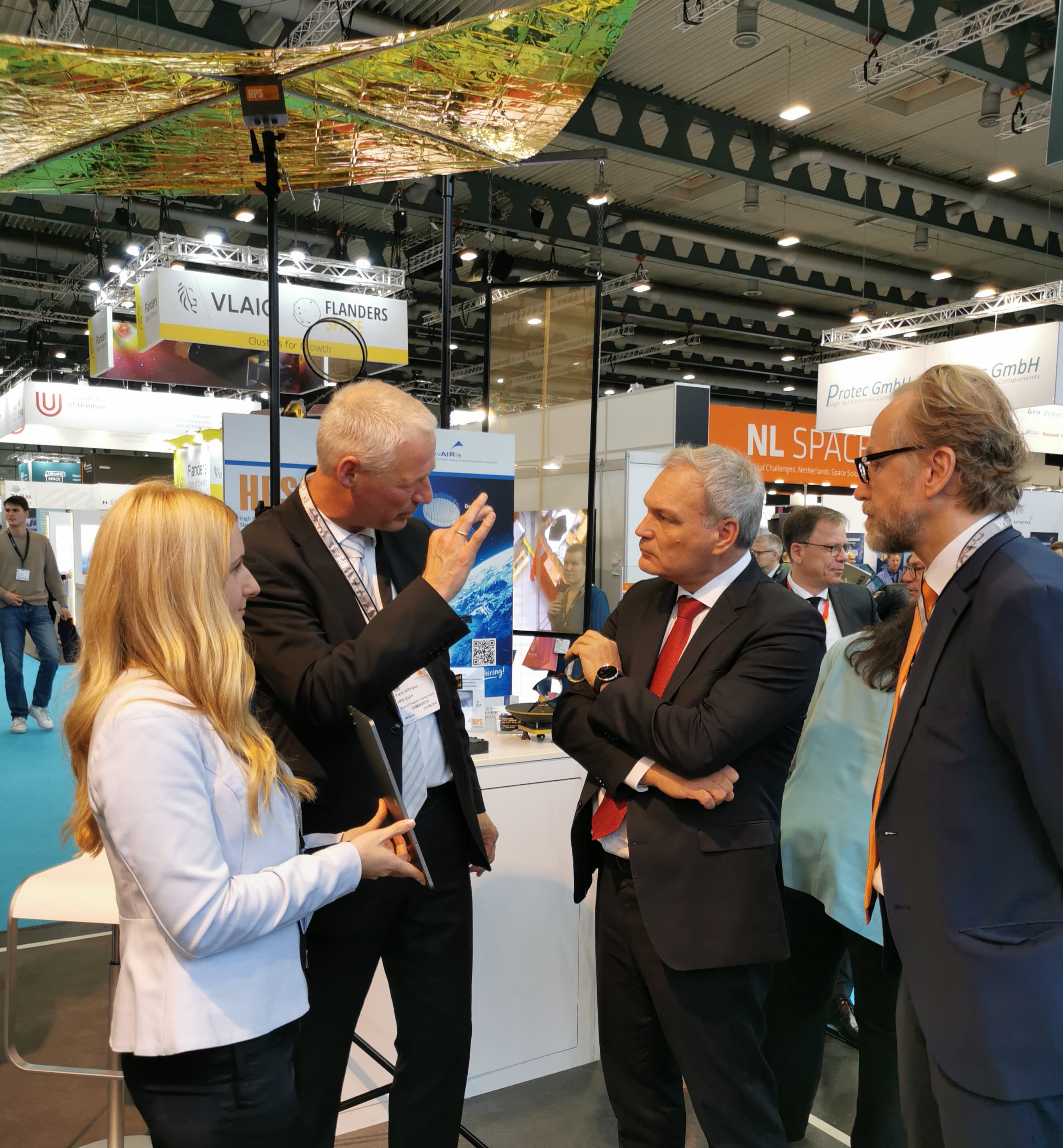
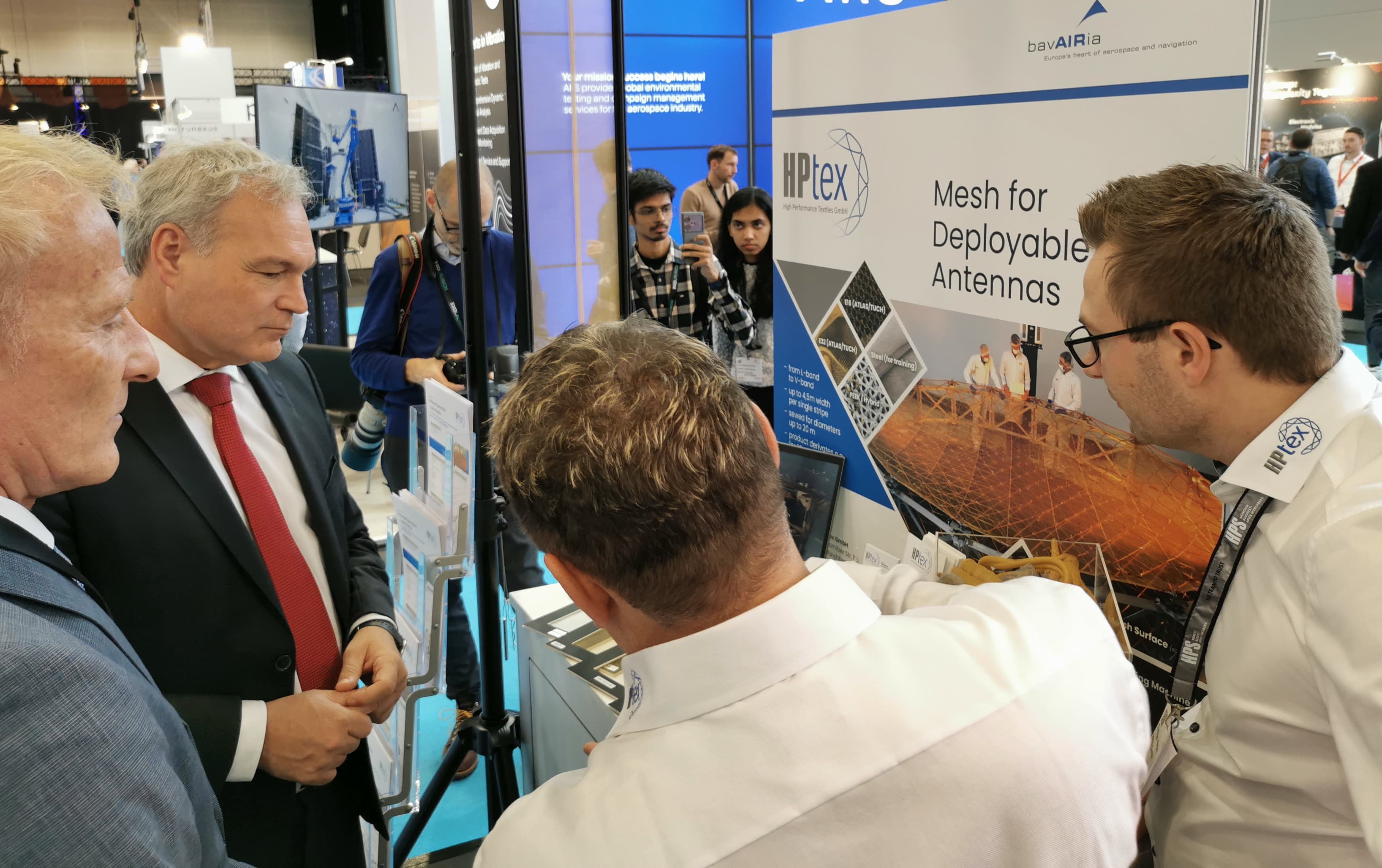
November 2024
New laboratory for mesh research at HPS
The Munich-based space technology company HPS is a joint venture partner of Iprotex-GmbH; both are equally involved in the joint company HPTEX in Münchberg near Bayreuth. This is where the flexible reflector material “MESH” is tailor-made and of the highest consistent quality for applications such as small and large deployable space antennas.
The market for mesh is divided among a small number of players worldwide. To survive here, continuous development is an essential prerequisite. HPS has therefore recently set up its own mesh research laboratory at its Munich headquarters on Hofmannstrasse. The initial team of two specialists is currently being expanded to include a further engineering position. The initial equipment of the laboratory for the further development and optimization of HPTEX mesh has already cost HPS 50,000 euros; among other things, investments were made in a mesh tension jig (stretch test rig) including an HD camera system. In addition, for yet another 50k euros the whole basement-area of the HPS building has been improved to host capacities for assembly work on ADEO brakesails in serial production.
Customized service is a top priority at HPS, so the new laboratory also carries out contract research, e.g. in a project called VMESH, in which a mesh for the very high frequencies in the V-band is being developed. The laboratory’s ability to carry out multiple iterated processes to measure the stretchability of antenna meshes is also unique on the market.
In addition, HPS is Europe’s only supplier of large deployable antenna subsystems with its own mesh production. The company’s flagship project is the ESA Copernicus Mission CIMR. HPTEX also serves customers from all over the world, including Europe, the USA, the United Arab Emirates, South Korea, Singapore and Taiwan, with the support of the new laboratory at HPS. The mesh is manufactured at HPTEX itself.
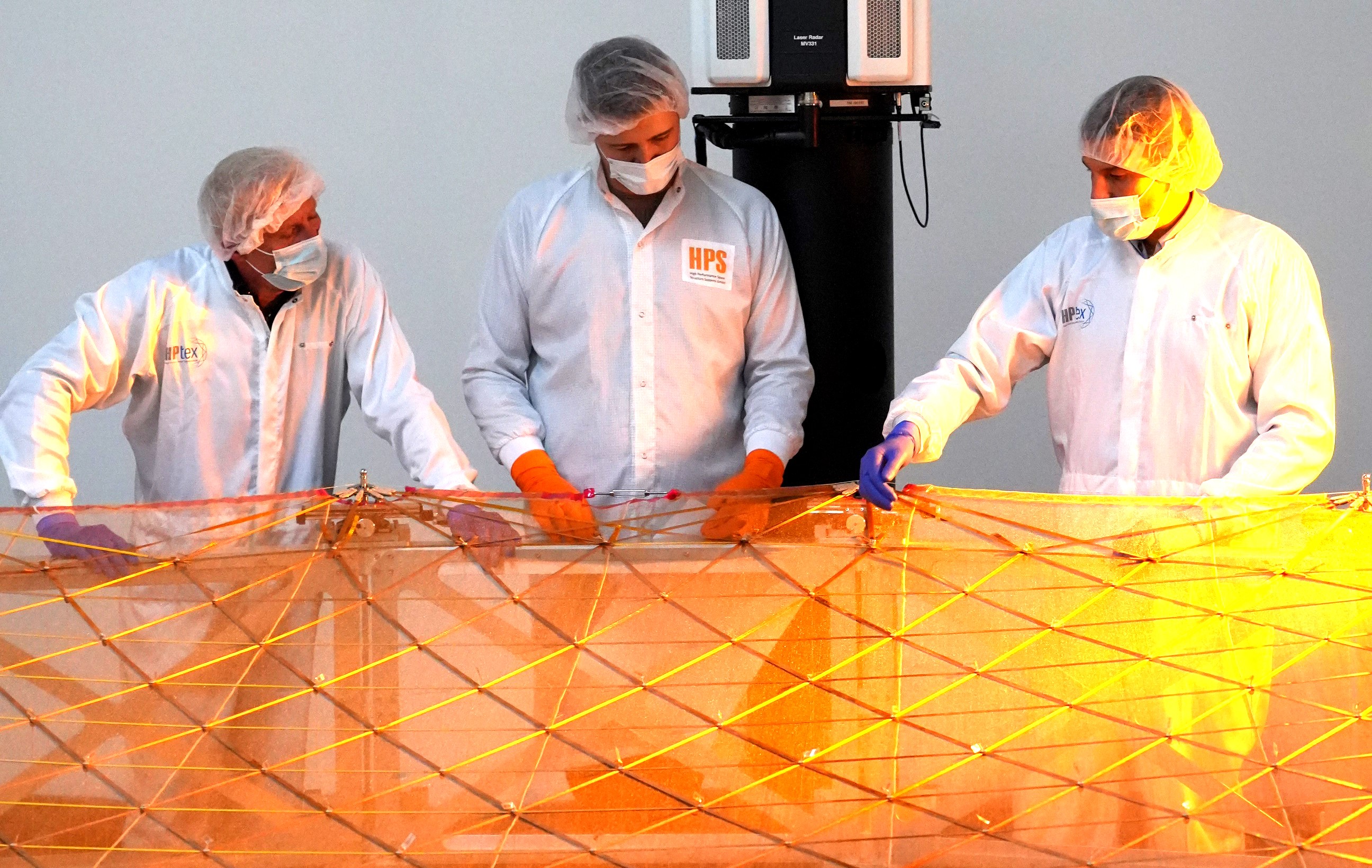
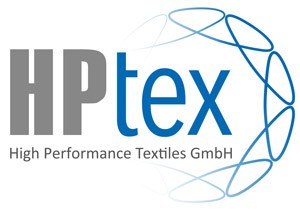
Oktober 2024
HPS Prominently Present at the IAC in Milano
Participating in the International Astronautical Congress, IAC, has developed into a good tradition at HPS over many years. This year, the company will be represented by Ernst K. Pfeiffer, CEO, together with ADEO project manager Mrs. Dorittya Milankowitch from HPS Munich and Horatiu Gheorghe as IAC-contact point for HPS Bucharest with products like secondary structures, thermal hardware and purging equipment. The HPS-team will keep up full presence during all five days of this international event.
Special highlights will be the company presentations; they are going to take place on Friday, 18th, from 10.15 to 10.45 a.m., and also as part of the Company Slam at the booth of the German association BDLI on Tuesday from 13.15 to 13.45 p.m..
Focus of both presentations will be on the product family of the ADEO deorbit sailsystem for automatic disposal of satellites after their end of mission, serving the idea of clean space, sustainability and debris avoidance even from the beginning of the satellite´s journey.
Main products besides ADEO to be asked at our booth: reflector antennas, deployable antennas, large deployable reflector subsystems, mesh, thermal hardware, purging equipment. HPS will warmly welcome there all its customers from both worlds: classic and NewSpace. For a dedicated prearranged business meeting please send a message to Contact@hps-gmbh.com.

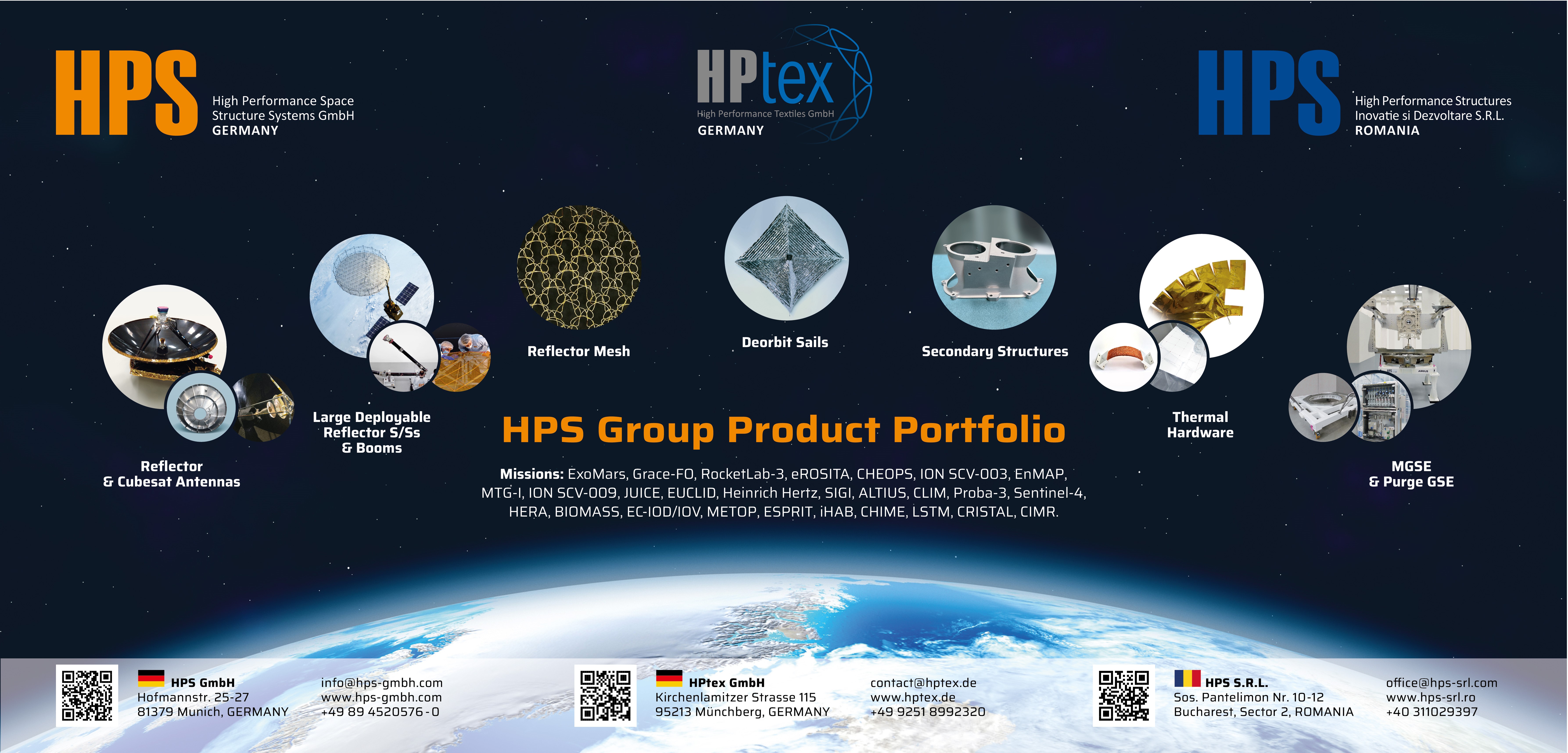
Oktober 2024
Innovative BANT-1 reflector antenna from HPS for Reflex: exemplary symbiosis of NewSpace and established space-SME
NewSpace – this means, among other things, speed in development, production and provision, paired with innovative versatility as a leitmotif for the performance of the product. A current example of this is the broadband reflector antenna developed for the new Reflex Aerospace satellite by space SME HPS GmbH (Munich, Germany) with a broadband spiral as an axial feed. The primary development goal was to achieve a large bandwidth and considerable gain while at the same time limiting the time from order to delivery to the customer to just 12 months. The antenna consists of a prime focus reflector with a diameter of 700 mm and an f/D ratio of 0.32, which is fed by a compact ultra-wideband cavity-backed spiral (CBS).
HPS thus succeeded in meeting all customer expectations in terms of performance, price, and timing while adhering to best practices and strict quality management; the project can serve as a striking example of an exemplary symbiosis between NewSpace and established space SMEs towards “NextSpace”.
The Reflex satellite will be launched on board a Falcon9 as part of a SpaceX rideshare 12 mission.
Picture:
Satellite “SIGI” by REFLEX AEROSPACE with integrated reflector Antenna “BANT”, supplied by HPS Munich, ready for transport to the launchpad in the U.S. (left: Ernst K. Pfeiffer, CEO HPS, right:Walter Ballheimer, CEO REFLEX AEROSPACE, visit as of September 30th, 2024)
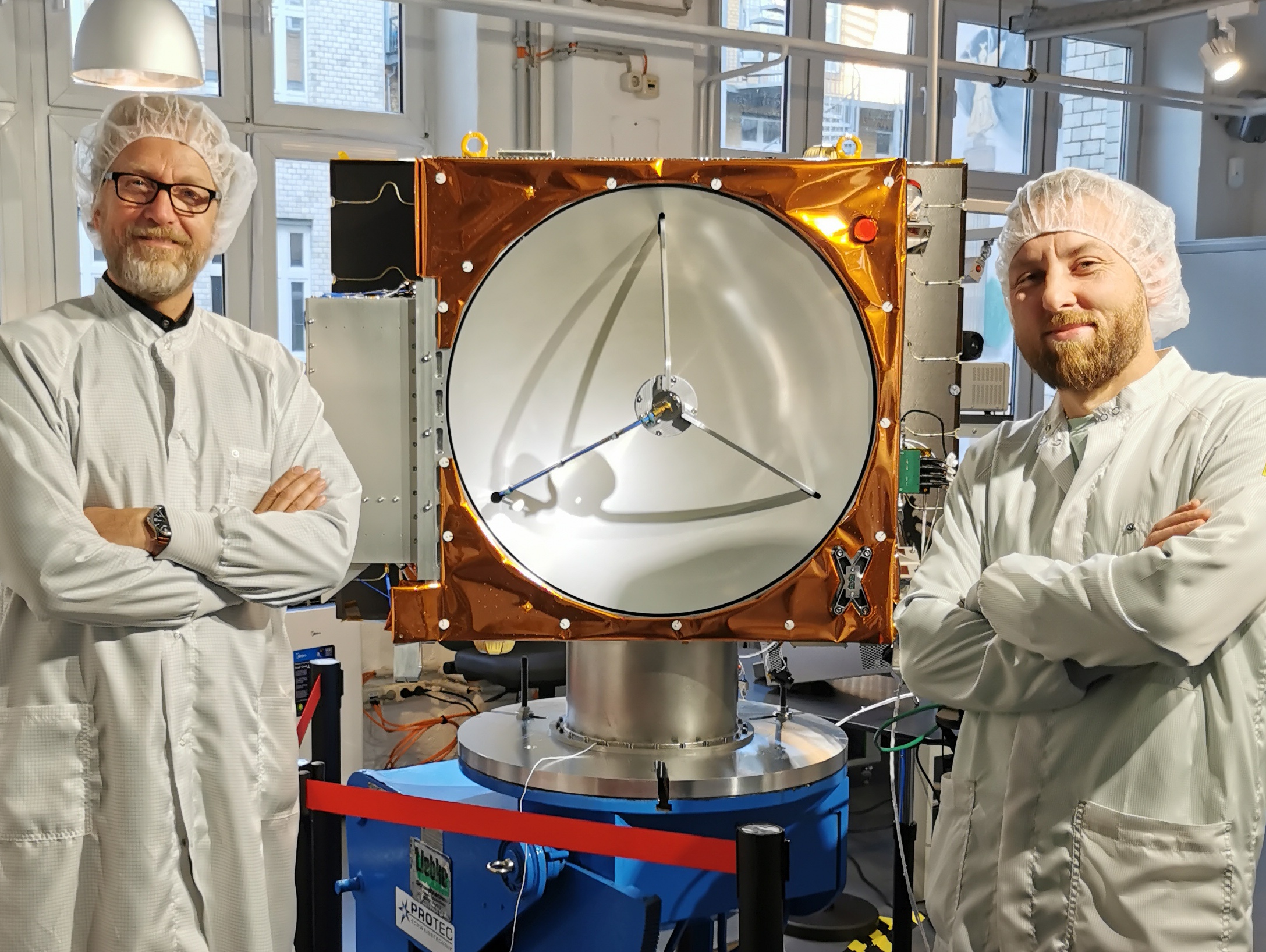
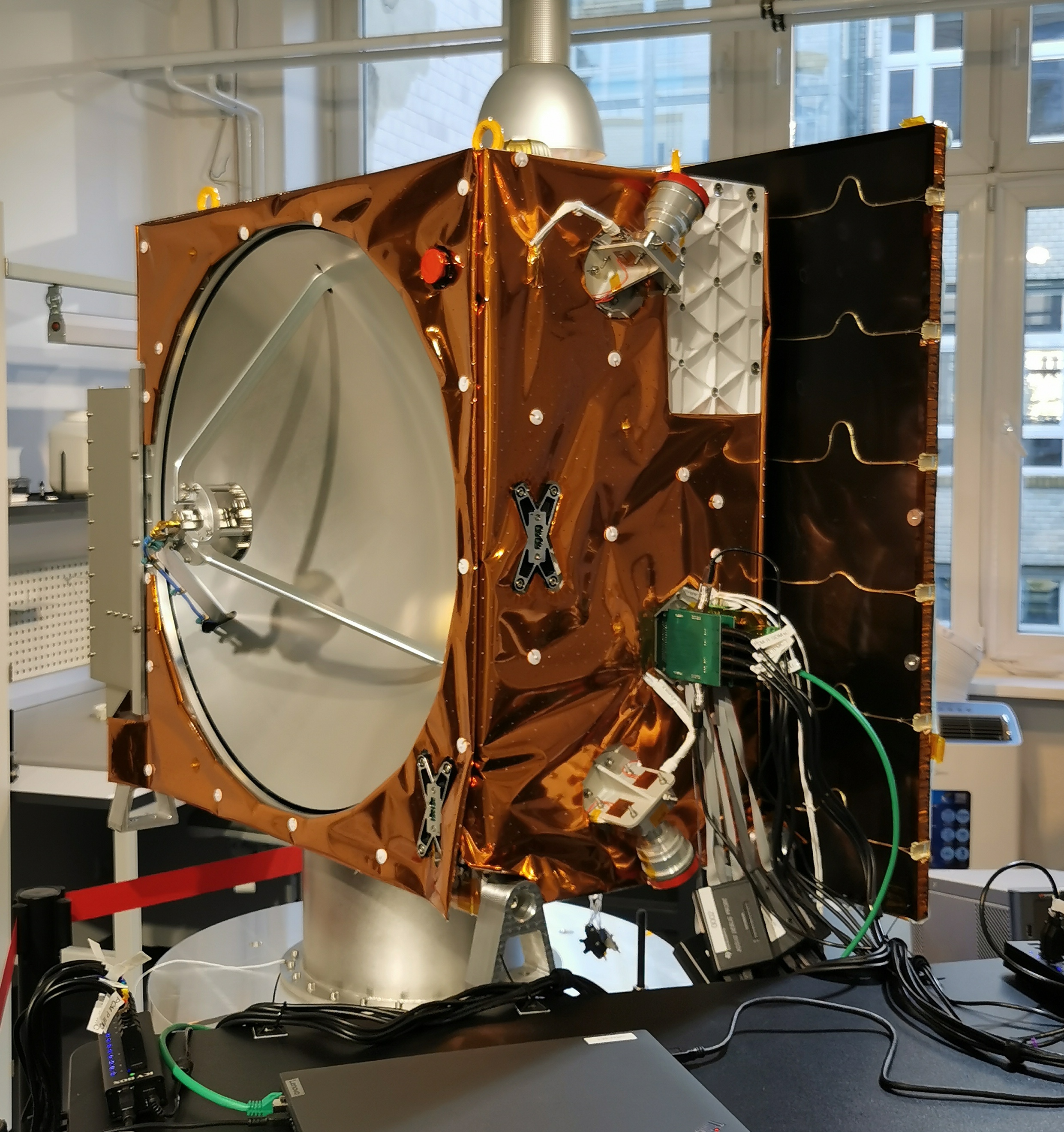
September 2024
ADEO Pico: The smallest dragsail gains a foothold in the largest market
Deorbit Technology from HPS
With the ink now drying under the contract for a PICO-class satellite deorbit device from the ADEO dragsail family of HPS, the Munich-based space technology company is now also setting foot on North American soil: After careful consideration of the alternatives, the Canadian company StarSpec Technologies decided in favor of the system for integration on their InspireSAT 12U ADCS MVP satellite, to be launched in 2026.
The ADEO-P was purchased at the beginning of July. The integration will be carried out by the experts in 2025. The satellite is planned to be launched in 2026 aboard a Falcon9 as part of the Transporter-17 SmallSat Rideshire mission from the Vandenburg Space Force Base in the USA. At the end of the mission, the dragsail will be deployed to a size of 1.4 m2 and automatically dispose of the satellite within the now obligatory period of less than five years. The satellite will burn up in the atmosphere without leaving any residue.
This initiative promotes StarSpec’s high precision space-qualified ADCS components, including sub-arcsecond precision star cameras, cogless reaction wheels, and ultra-high-bandwidth controllers, providing 100x the precision and imaging quality for LEO imaging satellite.
Jason Brown, Mechanical & Technology Lead, commented on the key factors leading to the selection of the ADEO-P for InspireSAT: “A primary mandate of InspireSAT is to provide high performance in-orbit capabilities in a way that does not compromise and strongly maintains the continued and future utility of LEO. We are delighted to have HPS, a proven high-tech specialist in the international space industry, at our side, allowing StarSpec Technologies to maintain its sustainable and orbit-conscious approach to space in a way that maintains focus on the successful demonstration of our transformative state-of-the-art ADCS. Thanks HPS!”
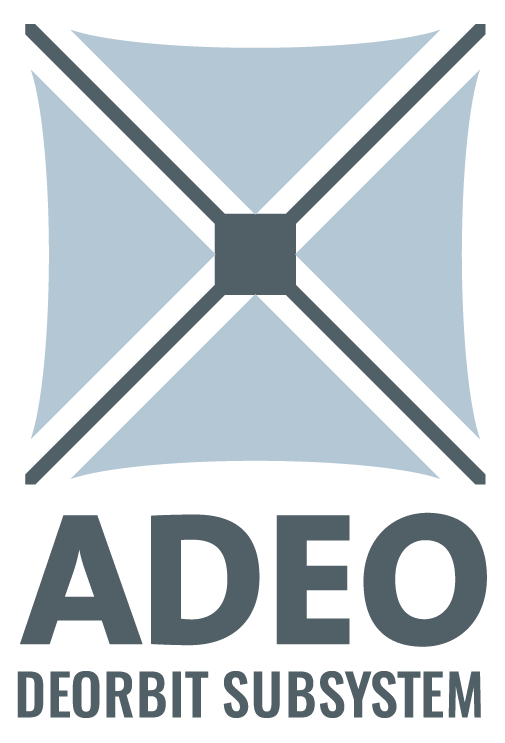
August 2024
ESA: 1 million for product innovation by HPS, AAC and DLR
ESA’s GSTP program is one of the European Space Agency’s most important instruments for promoting new technologies, particularly those generated by SMEs. The program also enjoys high priority in the overall ESA portfolio at the German space agency; the corresponding financial resources now also enable the launch of a new sub-program called “Product Initiative”. With the signing of the contract on August 7, 2024, ESA and HPS as the main contractor gave the go-ahead for the first technology project in this category.
It took just over six months from the idea to the signing of the contract; the funding amount is one million euros. The Munich-based space technology company HPS and its long-standing partner, Vienna-based Aerospace & Advanced Composites GmbH, are contributing 20 percent of their own funds, while the DLR Institute of Space Systems in Bremen is also on board on the research side. Over the next 24 months, highly innovative films (working name “ProFilm”) will be developed in various thicknesses and surface configurations and for large-area applications, which are characterized by two special features in particular:
- they are resistant to the chemically aggressive residual oxygen molecules (ATOX-resistant) and are therefore perfectly suited for use in particular in the highly frequented low earth orbit LEO area,
- Special derivatives are invisible or non-reflective.
In addition to use as thermal insulation for satellites, this also results in innovative applications as invisible brake sails as a further development of the HPS ADEO product range for deorbiting decommissioned satellites.
In this way, they serve four strategic goals of European space:
- Securing technological independence from other major spacefaring nations that have already made progress in this area
- Support European manufacturers of spacecraft and satellites, for whom maximum physical protection is an element of the competitiveness of their products
- Avoidance of astronomy-hostile light pollution in space through non-reflective surfaces on dragsails and thermal insulation such as MLIs and SLIs. There are also plans to use them for solar panels and radiators.
The ideas go as far as deployable structures that could make entire satellites invisible with ProFilm.
HPS CEO Ernst K. Pfeiffer is enthusiastic about the start of the project: “The innovation processes that have now been initiated will result in highly exciting products – the cooperation with our partners, DLR in the north and AAC GmbH in the south, alone is a guarantee of this. Above all, however, this premiere of ESA’s new GSTP sub-programme shows how quickly and effectively the European space agency can identify, accept and master technical challenges. This is exactly what European space travel needs, and this is exactly what innovation drivers from the ranks of SMEs need in particular.”
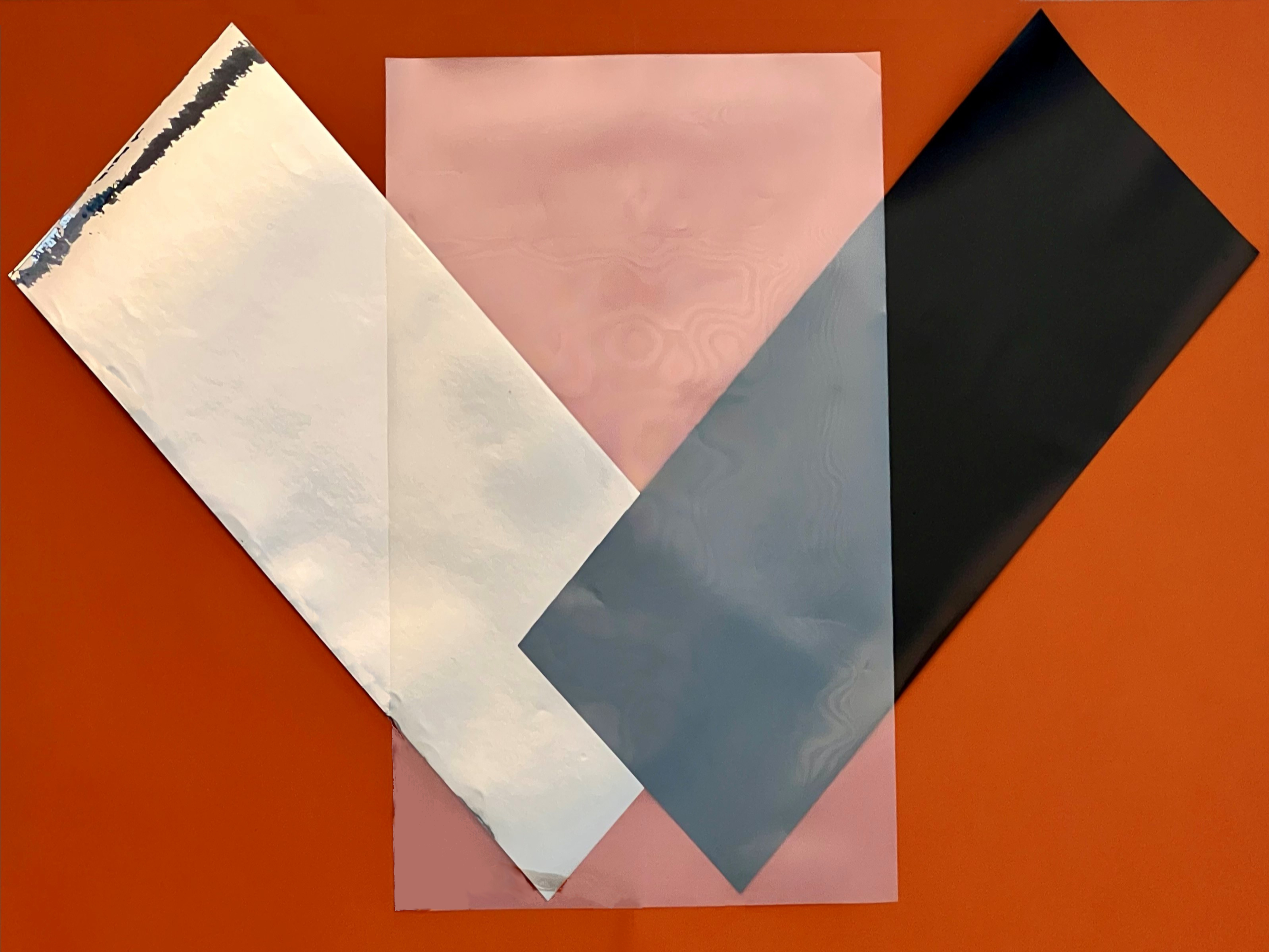
July 2024
Family & Friends Team Event at HPS Munich
HPS celebrates “Family & Friends”: July 10, 2024 is a special date – we celebrated with the entire HPS workforce and their families and all those many friends of our company according to the motto: Shared joy is double the joy.
Because we at HPS have many reasons to be happy: Since July 1, 2024, our HPS family has grown to a new record level with a total of 93 employees (including 11 freelancers and students) at the Bucharest (HPS Romania), Münchberg (HPtex) and Munich (HPS HQ) locations, and in Munich we have just expanded with a new, large floor in Hofmannstrasse as well as a large assembly area in the basement.
The circle of our friends from joint projects and association activities is huge, many from the Munich area came to visit us today, we were overwhelmed by the large number of surprise guests. Success is best celebrated with “Family & Friends”!
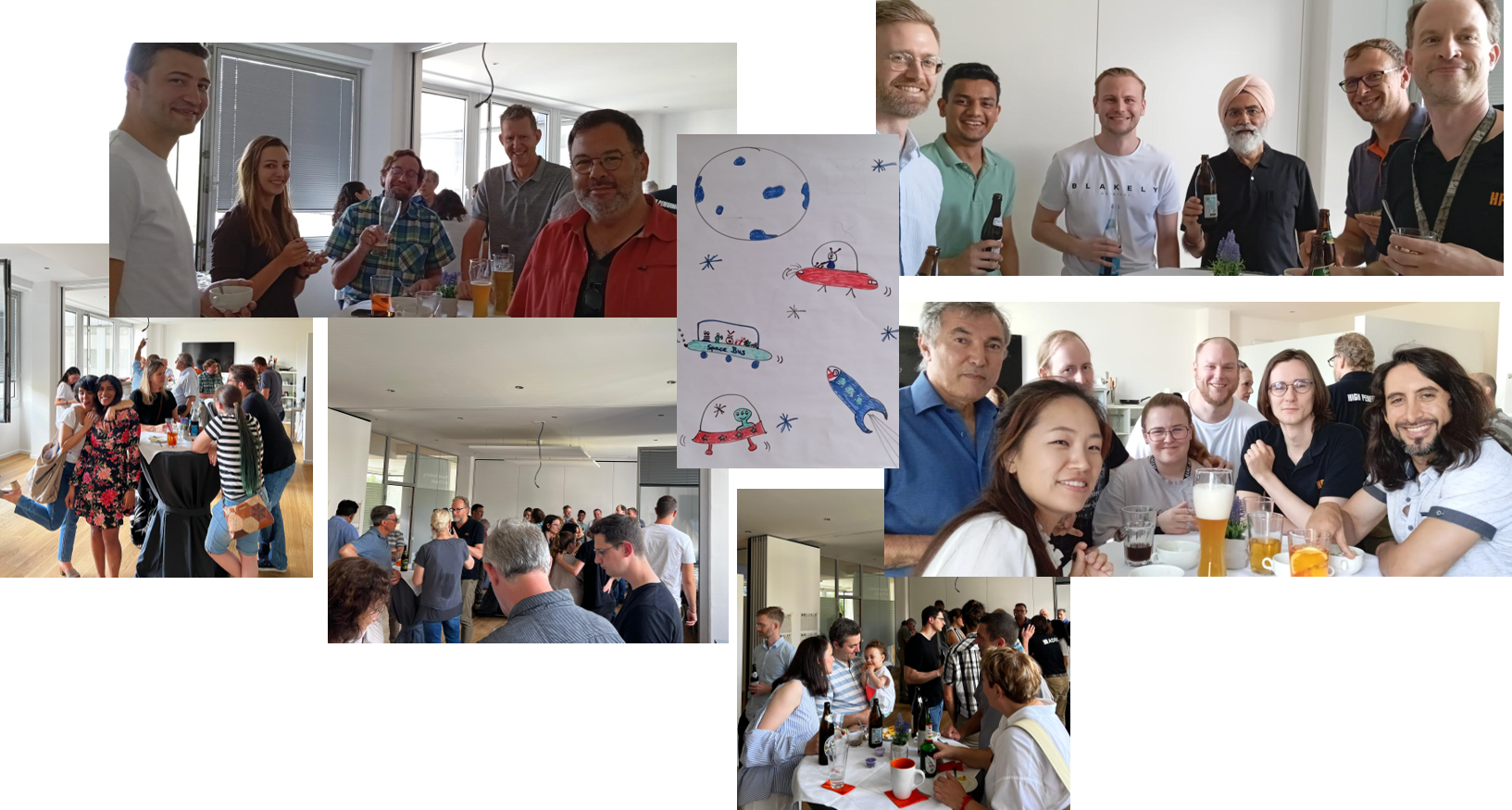
HPS Signing of the Zero Debris Charter at ILA on June 6, 2024
June 2024
ESA Leads the Way: Rapid Implementation of the Zero Debris Charter
Sustainability in space travel has also been an issue for the European Space Agency ESA for years. However, only a few months passed between the decision to adopt a Zero Debris Charter and its implementation.
Keynote speaker ESA Director General Josef Aschbacher also saw this as a sign that the time is finally ripe for concrete steps instead of pure symbolism, especially as ESA itself has provided significant impetus for the development of the two main technologies on the way to “Zero Debris”: firstly, ways of removing scrap from space, but above all, equipping satellites with deorbit technology from the outset so that no more waste is produced after the end of the mission.
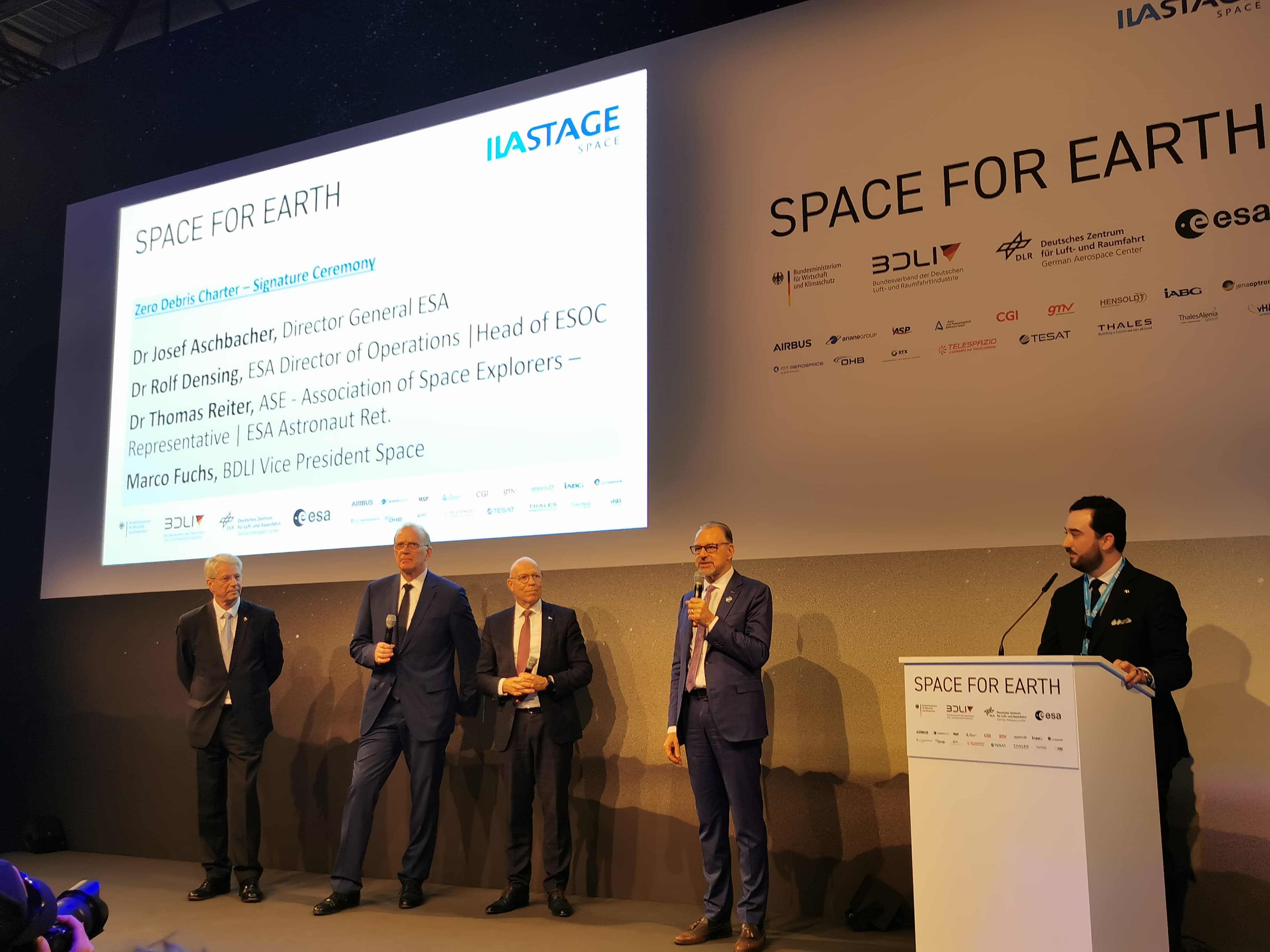
ADEO Drag Sail: The Key to Sustainable Spaceflight
The ADEO brake sail, which is now available as an entire product family for all sizes of LEO satellites from HPS series production, stands for this. In addition to grants and support from ESA, DLR and Bavaria, HPS CEO Ernst K. Pfeiffer also invested a lot of the company’s own money in the project, always firmly convinced that the hour of ADEO would come sooner or later – and if a little later, then all the more powerfully.
It was exactly the same when, in mid-2023, the ESA set the new rule of a deorbit maximum of 5 years for ESA-funded missions instead of the previous 25 years, and, accordingly, LEO satellites without ADEO (or similar) will no longer be launched at all from October 2024, as SpaceX, for example, makes clear in its conditions of carriage in accordance with FCC regulations.
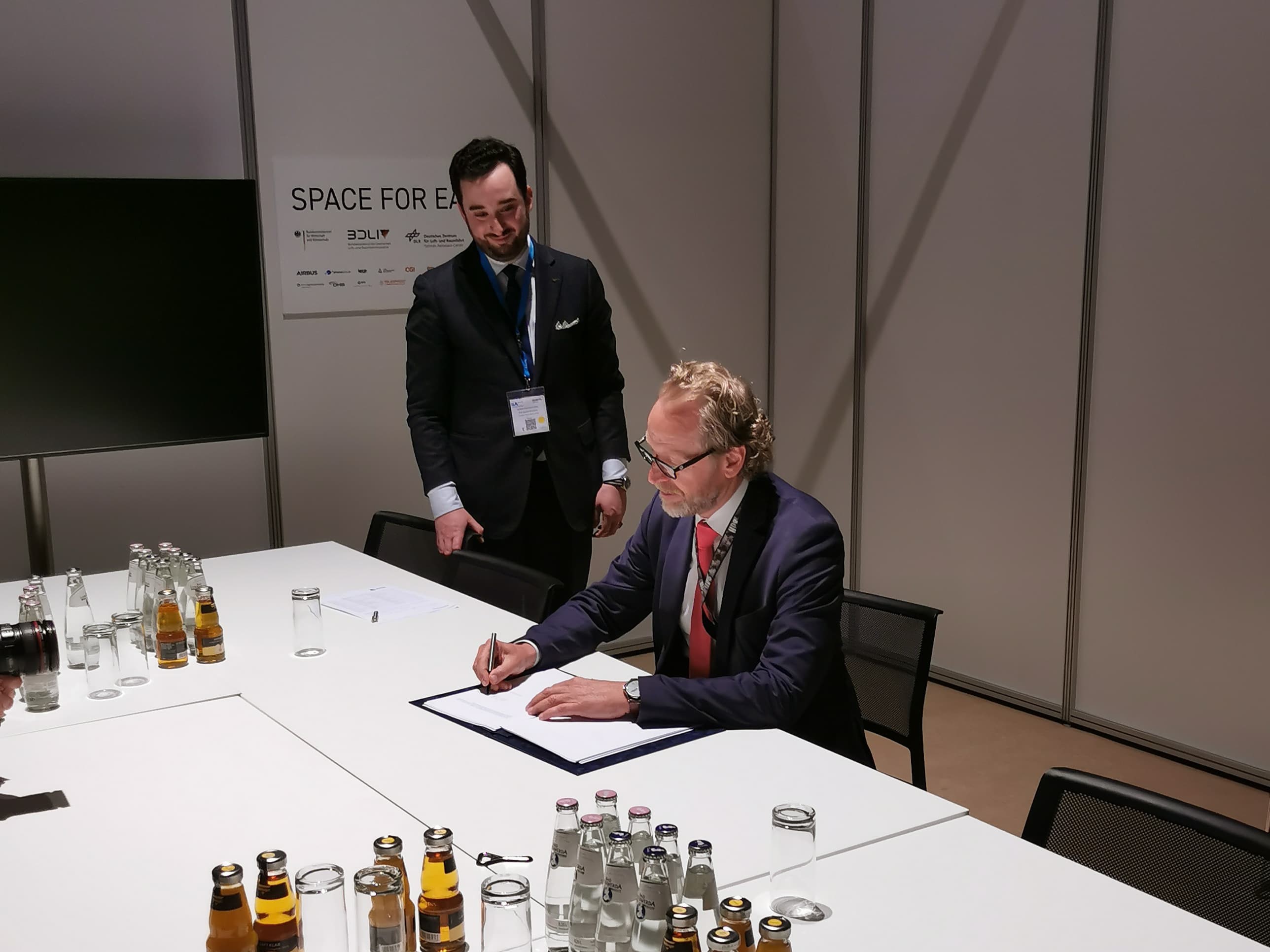
Historic Moment: 12 Nations Sign the Zero Debris Charter
The Charter was signed in Brussels on May 22 by 12 countries, including Germany. Since then, over 100 organizations, companies and entrepreneurs have been waiting for their cue to sign.
The ILA 2024 marks a very important stage on this path towards the sustainability of European space travel and sets an example for companies on other continents.
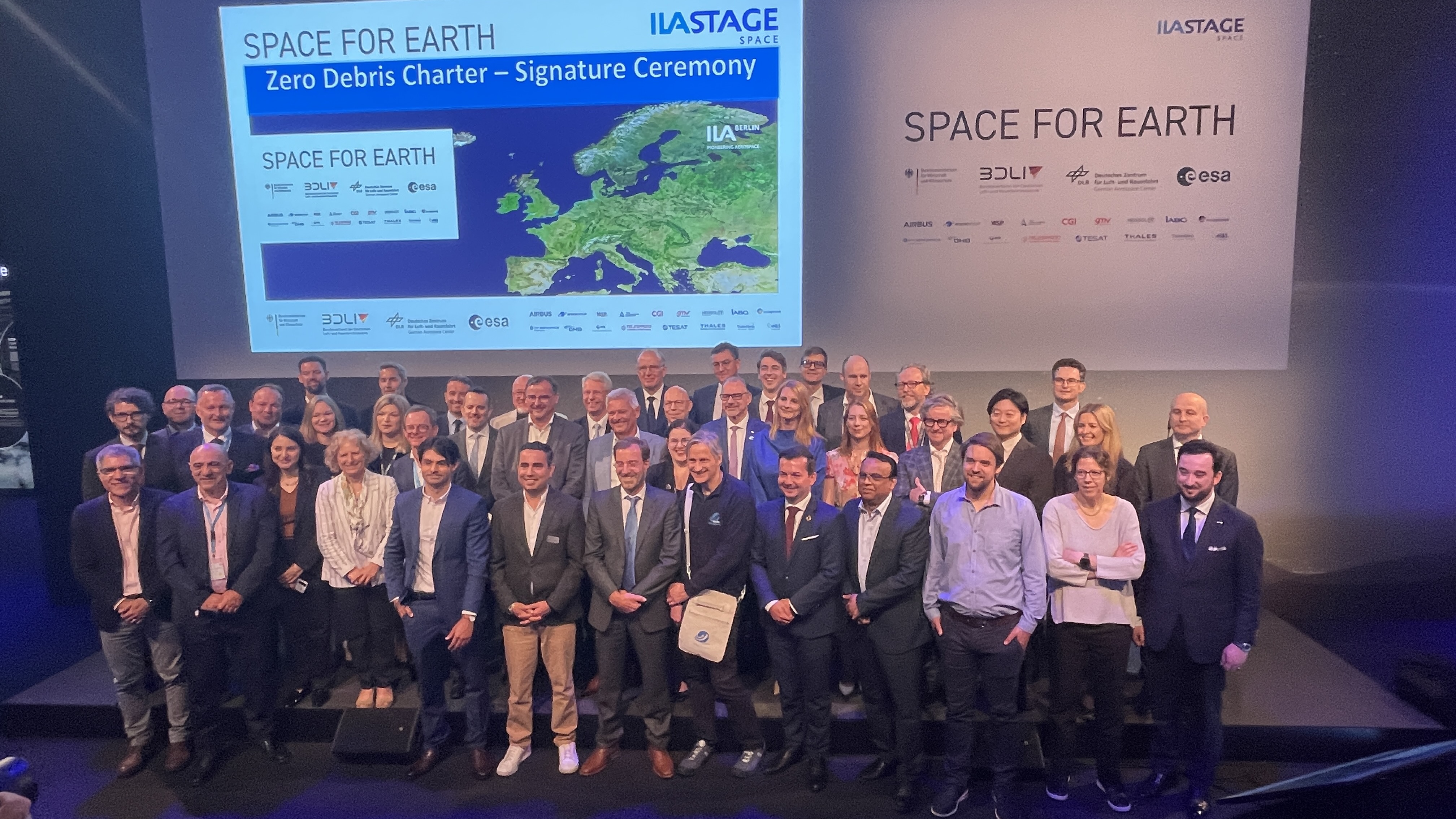
ADEO L1 “ready for lift-off”: World’s largest operational brake sail for the disposal of space debris successfully tested
Dezember 2023
ADEO L1 “ready for lift-off”: World’s largest operational brake sail for the disposal of space debris successfully tested
HPS completes the ADEO sail fleet with its first largest version under the version named L1. Its 25 square meters of sail area unfolded successfully deployed on Monday, 4th of December 2023 in a final ground test after a complete completed PFM qualification campaign. This included vibration tests in all axes as well as tests under thermal vacuum, including hot and cold firing tests (tests to verify the deployment release mechanisms under extreme temperatures). The tests were carried out under responsibility of HPS Munich at the facilities of the DLR Institute of Space Systems in Bremen – a prime example of cooperation between industry and research & development. This final and most important test enjoyed great interest from the media (including SAT1, RTL, NTV, DPA) covering the 20-minute deflation process and interviewing the enthusiastic project team of HPS and DLR. Links to the articles and television videos can be found HERE.
This test is also a success of ESA’s GSTP program, which significantly supported the development of ADEO-L1 financially and technically. Technology programs in general are essential for independent SMEs in the space industry and their products on the way to market readiness and worldwide series sales.
The ADEO brake sails deploy after the end of the satellite’s mission and brace themselves against the resistance of the atmosphere that still prevails in orbits up to an altitude of just under one thousand kilometers. This deployment immediately leads to a drastic reduction of the speed of the satellite and the entire package sets off on its accelerated descent towards the earth’s atmosphere, where it then burns up in the frictional heat of up to two thousand degrees Celsius. The entire return process takes even significantly less time than the latest guidelines prescribe. Until recently, the process could take up to twenty-five years, while it must now be completed within five years. And, to ensure that operators follow the rules, launch service providers such as SpaceX no longer even take satellites into space if they are not equipped with the appropriate return technology from the outset.
The Munich-based space-tech company HPS had this development in mind more than ten years ago, when no one else was really thinking about ways to avoid space debris. With great support from the space agencies ESA and DLR, the DLR institutes in Bremen and Braunschweig, the companies DSI, Bremen, and formerly HTS, Coswig, plus a seven-digit-investment of HPS, the company´s highly committed young team of experts has created an entire product family under the generic name ADEO, from the smallest versions ADEO-P (Pico), ADEO-C (Cube) and ADEO-N(Nano), ADEO-M (Medium) and the latest member of the group, ADEO-L (Large). The development master plan not only extends even further to possible ADEO variants with up to 100 square meters of braking surface, but also leaves enough room for derivatives with completely different applications, such as the monitoring of space debris smaller than1 cm directly in space.
In its largest flight-ready version to date, L1, ADEO has a take-off weight of 10 kg at dimensions of 43 cm x 43 cm x 25 cm; in contrast to the smaller versions, this unit also requires its own power supply for motor-controlled deployment of the masts and sails. ADEO-L1 generally fits perfectly on satellites up to the 1,500 kilo class.
In the first quarter of next year, ADEO-L1 will be integrated onto a satellite of the Belgian company Redwire for its first test flight at the end of 2024/beginning of 2025 as part of a EU program, while the versions ADEO-N1 and ADEO-N2 have already passed their baptism of fire in space. Approaching the fiery finale is currently ADEO-N2, deployed in December 2022. Since then, it has already lowered its satellite from an orbital altitude of 510 km to 460 kilometers in only 12 months without the aid of any fuel or attitude control. Expected “arrival” in a completely burnt-up state: mid2025 – and thus even around five times faster than without sails and twice as fast as prescribed.
ADEO-L1 will master this path of final in-orbit verification just as safely, company boss Dr.-Ing. Ernst K. Pfeiffer is certain. As with the other versions, it will then go straight into series production for which the company has special production facilities at its Munich and Bucharest sites.

